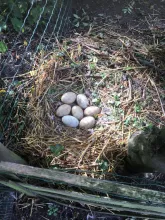
Black Swan (Cygnus atratus)
Species name
- Dutch name:
- Zwarte zwaan
- English name:
- Black Swan
- German name:
- Schwarzschwan
- French name:
- Cygne noir
- Scientific name:
- Cygnus atratus
Scientific classification
- Order:
- Anseriformes
- Family:
- Anatidae
- Onderfamilie:
- Anserinae
- Genus:
- Cygnus
Description
- Description:
Male:
The body is mostly black, with the exception of the broad white wing tips which are visible in flight. The bill is a deep orange-red, paler at the tip, with a distinct narrow white band towards the end.Female:
Females are Identical to the males. But Males are Larger.Juvenile:
Young black swans are much greyer in color, and have black wing tips. Get full adult plumage by second winter.
Standard Measurements
- Body Length (cm):
- The male (drake) of the Black Swan measures approximately 115-140 centimeters. The female measures approximately 110-140 centimeters.
- Body Weight (grams):
- The male will weight about 4600-8750 gram. The female will weight about 3700-7200 gram.
The weight is notoriously variable and can only be used as indication!
- Habitat:
The black swan needs water and grassland. A pond with an area of 12-15 m2 or larger and a depth of one and a half meters is desirable in aviculture. The depth of the pond is important for mating. Furthermore, scarce low vegetation near the pond is possible. Banks should be at a shallow angle to allow easy entry to and exit from the water; this is particularly important if cygnets are to be parent reared. More than one pair may be kept in very large parks where each pair can establish a breeding territory. Swans appreciate water weed and grass, but other green foods such as lettuce and cabbage may be used as substitutes if necessary. They are relatively slow eaters and care should be taken in mixed enclosures that they get sufficient food.
Good amounts of vegetation should be provided for nest building, with cover available for early-nesting species. Parent hatching and rearing is usual. Swans are able to defend their young against most predators, and their highly-aquatic lifestyle also makes cygnets less vulnerable. Unlimited green food should be available for the cygnets.
- Note:
Black swans are generally robust and easily maintained in captivity. They should have access to a good area of water with gently-sloping banks, and good grazing land. Ice-free water should be available in winter, with an area of straw provided on shore if necessary.
In general they should be kept apart from other swans, although they may share a lake with e.g. a pair of Mute swan (Cygnus olor) if it is sufficiently large to allow two breeding territories which do not overlap. Young birds can be used to establish a colony, but adult pairs should not be mixed. They tend to be less aggressive towards geese and ducks than some of the other swans, but may be particularly aggressive to dark-coloured geese, and can be very aggressive while breeding - may even kill ducks intruding near the nest. They may also be aggressive to people. They can be kept in a mixed collection if there is sufficient water area, grazing area and ample cover. If kept purely for display, group of females is best, as males are likely to fight with one another.
Black swans are easy to breed, laying on a large pile of vegetation. They may breed in any month and sometimes breed in winter. May re-clutch if eggs or young cygnets lost. Juveniles will be rejected if double-brooding occurs.
Cygnets are easy to rear, although care should be taken to avoid imprinting and imprinted males can be particularly aggressive once adult. If hand-reared, cygnets should be kept in a brooder with a heat lamp (to give 33,5°C in the first week), with sufficient room for the birds to choose their own comfort zone. Access to water for a swim is appreciated; this may be in an appropriately sized bowl initially (e.g. while the brooder is cleaned out). Starter floating pellets for the first few days may be given. If weather permits the cygnets may be kept outside in a pen with a pond by two to three weeks old.
Hybrids have been reported with Mute swan (Cygnus olor) (hybrids large, mottled grey and white), Tundra swan (Cygnus columbianus), Whooper swan (Cygnus cygnus), Trumpeter swan (Cygnus buccinator), Greylag goose (Anser anser), Canada goose (Branta canadensis).
- Breeding:
- The female Black Swan usually lays from 5-6 pale green or whitish-green eggs and incubates them for 36-40 days.
- Artificial incubating:
The ideal relative humidity for incubating most waterfowl eggs is 55% (ground nesters) and 40% (cavity nesters). The temperature is usually 37.4°C. Set ventilation as recommended by the incubator manufacturer. Eggs must be turned, either automatically or by hand, a minimum of 4 times a day. As the duckling develops there is a loss of water from the egg and the air sac gets bigger. In normal development of an egg with a 36-40 days incubation, the air sac occupies about a third of it three days earlier. Cleanliness is vital and ideally eggs should be moved to a separate hatcher at this point, where the humidity should be increased to 65% and even higher once they have pipped internally.
- Bird banding:
- Recommended closed leg band ring size for the Black Swan is 20 mm.The leg band ring can only be applied on a young swan at around 16-18 days old.
- It doesn't matter what leg that you band, but it's good to have a consistent system. Suggested: Left leg = Female, Right leg = Male
- Rearingfeed:
-
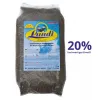
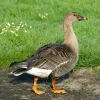

Floatable special rearing feed for all types of aquatic ornamental fowl - especially for the cultivation of trees as well as greening ducks.
This well-balanced complete feed with 20% protein content convinces above all by its good compatibility and forms the basis for visibly healthy growth from day one.
Made exclusively from wholesome and selected raw materials, Lundi Micro Regular is also ideally suited for the year-round feeding of waterfowl.
- Maintenance food:
-



Floatable special rearing feed for all types of aquatic ornamental fowl - especially for the cultivation of trees as well as greening ducks.
This well-balanced complete feed with 20% protein content convinces above all by its good compatibility and forms the basis for visibly healthy growth from day one.
Made exclusively from wholesome and selected raw materials, Lundi Micro Regular is also ideally suited for the year-round feeding of waterfowl.



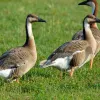

Lundi Regular with a protein content of 20%, valuable Spirulina and high-quality by-products is optimally balanced in its composition maintenance food for water ornamental fowl of all kinds. Especially green teal and Whistling ducks that are not dependent on a very high protein content, are well supplied.
Lundi Regular contains all the minerals and vitamins in full form that are important for the animals. Therefore also suitable as breeding food.


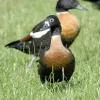


Floating full food for all sea ducks, green ducks, eider ducks and geese, especially in the moulting and breeding phase ideally suited. Packed with wholesome raw materials, natural vitamins and trace elements, this performance food with a protein content of 30% forms the basis for lifelong vitality.


